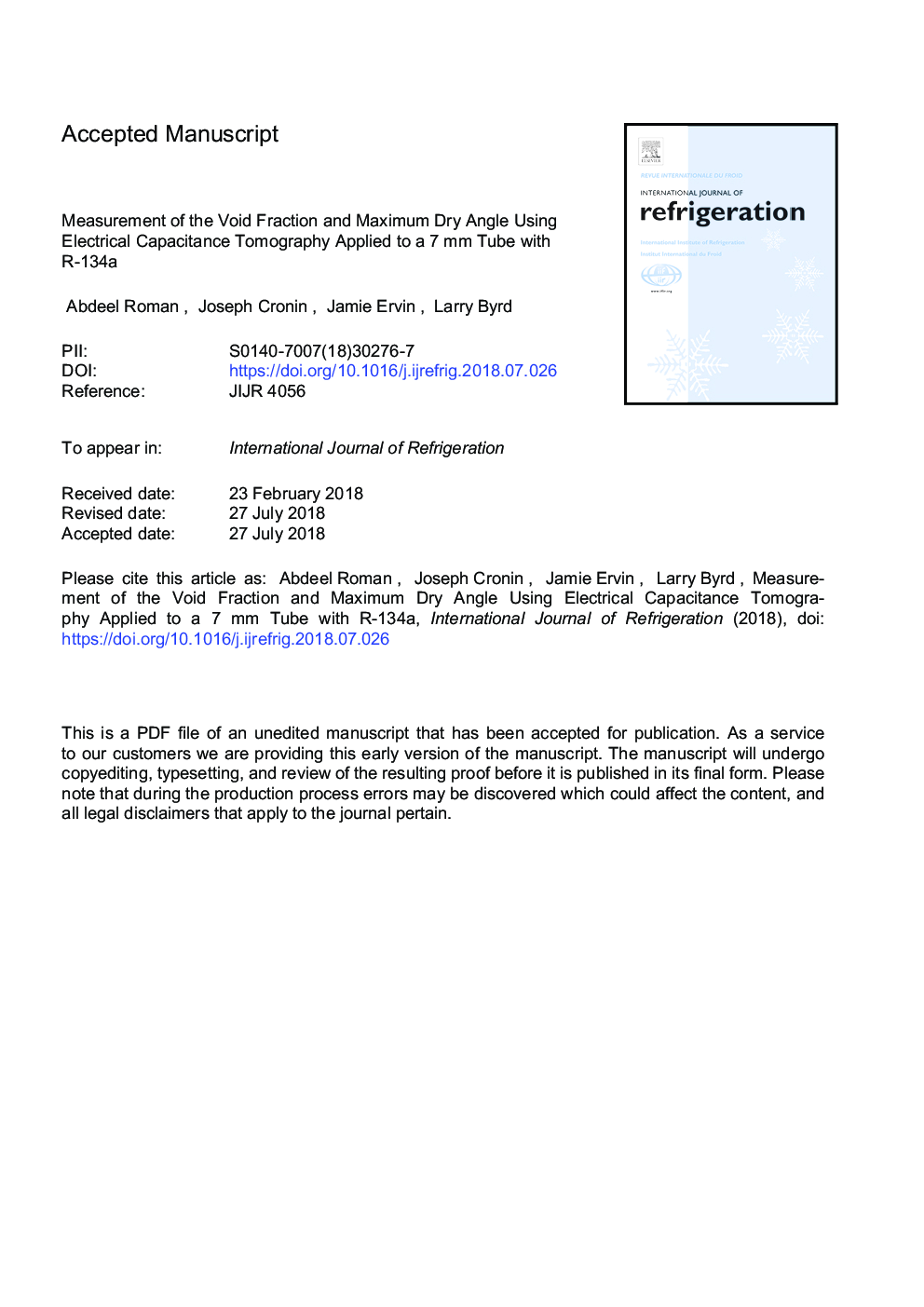| Article ID | Journal | Published Year | Pages | File Type |
|---|---|---|---|---|
| 11012135 | International Journal of Refrigeration | 2018 | 33 Pages |
Abstract
The void fraction and maximum dry angle are important because they can be associated with heat transfer occurring in the passages of refrigeration systems. In addition, the void fraction can be used for estimating the pressure drop. Experiments involving electrical capacitance tomography were performed to measure the void fraction and maximum dry angle for refrigerant R-134a flowing in a 7â¯mm ID horizontal tube. The measurements were conducted at saturation temperatures in the range 18-22°C, qualities in the range 0.1-0.9, and mass velocities in the range 100-150â¯kg m-2sâ1. The ability of an electrical capacitance tomography system to measure the void fraction was studied in static and dynamic experiments. The time-averaged void fractions compared well with values obtained from correlations found in the literature. Further, a new technique using tomographic images to determine the maximum dry angle was developed. It was found that this technique can be used over a range of flow patterns, from stratified flows to annular flows with partial dryout.
Related Topics
Physical Sciences and Engineering
Engineering
Mechanical Engineering
Authors
Abdeel Román, Joseph Cronin, Jamie Ervin, Larry Byrd,
